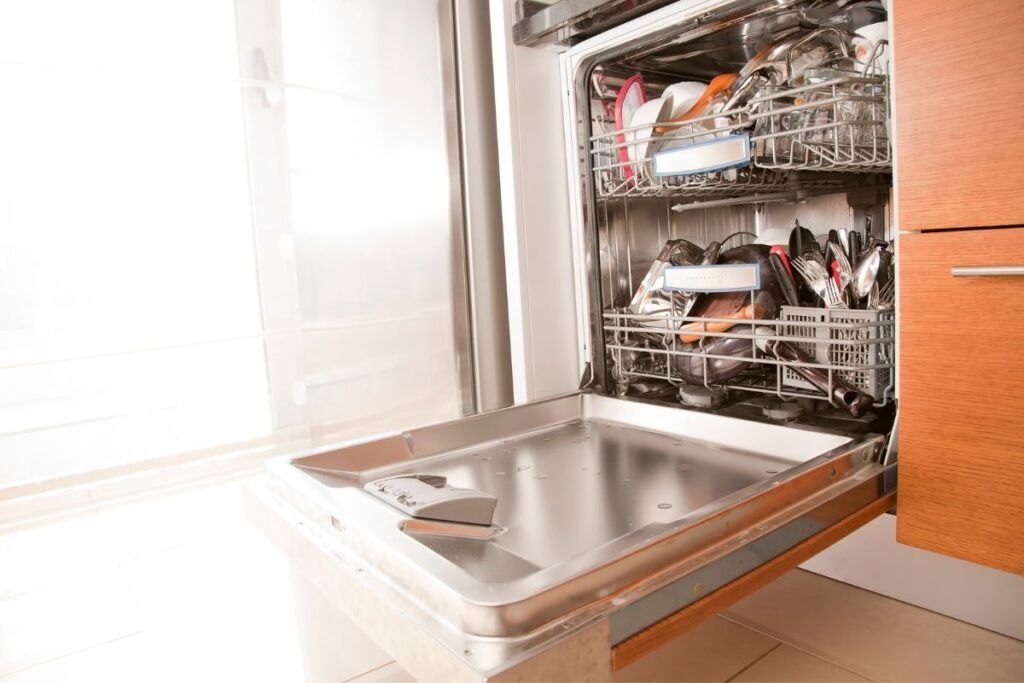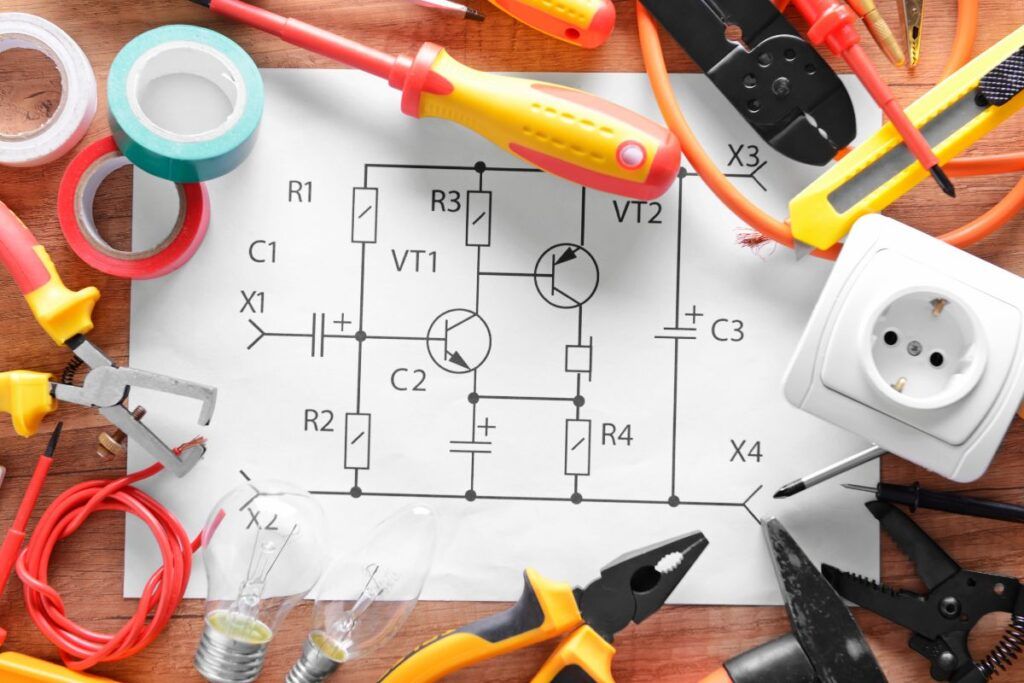Knowing the amperage capacity of the wire gauges helps you understand which electrical appliances you can link with the circuit without the risk of overheating. For example, an 8 gauge wire dishwasher, dryer, water heater, etc. But how many amps will it handle?
An 8 gauge wire can handle 40-55 Amps of electrical current. If you use a copper wire, an 8 gauge wire will carry 40-55 Amps for 62 feet in a 120V circuit and 124 Feet in a 240V circuit. But if it’s aluminum, it will carry 30-45 Amps for 53 Feet in a 120V circuit and 106 Feet in a 240V circuit.
Several factors determine the amps’ capacity of an 8 gauge wire. This article will take you through those factors and the usages of the 8 gauge wires. So, let’s get right into it.

Check out our list of top-handpicked products for all your electrical, appliance, and HVAC system needs to keep your home running smoothly.
This post includes some affiliate links.How many amps can an 8 gauge wire handle?
According to the National Electric Code, or NEC, an 8 gauge wire can handle 40 to 55 amps of electricity.
Let’s discuss some amps and the 8 gauge wire’s capacity to handle them.
30 amps
30 amp circuits are the low electricity circuits.
Below it is the 10, 15, and 20 amps.
For such circuits, the best wire is a 10 or 12-gauge wire.
These wires can easily handle amps up to 30.
However, it is always better to use bigger wires so that the wires do not overheat.
An 8 gauge wire will fulfill the circuit’s requirements without overheating.
It will easily carry 30 amps without even exceeding the temperature.
You can use both copper and aluminum in this case.
Also read: Can You Mix 12 And 14 Gauge Wire?
40 amps
Here also, the 8 gauge wire will work the best.
The recommended amp circuits for 8 gauge wire start from 40.
So, the wires will handle 40 amps without any trouble.
The 8 gauge wires will not overheat in this circuit and will also give flexibility in the future.
Here also, you can use both copper and aluminum wires.
But copper is preferable due to its good durability.
50 amps
The 8 gauge wires are limited up to 55 amps.
So, it can handle 50 amps.
But, there can be chances of overheating after some time.
Though the 8 gauge wires can handle 50 amps, it is better to shift to a bigger wire, like 4 or 6.
It is always safe to stay away from heat.
If you use an 8 gauge wire for 50 amps, use copper wire for better results.
The maximum temperature will reach up to 167°F.
Aluminum or copper-clad is not recommended as they will overheat and cause a fire.
60 amps, 80 amps, and 100 amps
It is very dangerous to use 8 gauge wires for 60 amps.
The 55 amp is the last and maximum option for the 8 gauge wires.
Exceeding 55 amps will cause short circuits, melt the wires, and start a fire.
The temperature prevents the 8 gauge wire from tolerating 60 amps.
The 8 gauge wires reach 194°F when they are run in a 55 amps circuit.
So, you can imagine what will happen in 60 amps.
Even if the wire is copper, it won’t work and will start a fire.
The same logic applies to the 80 and 100 amps.
An 8 gauge wire will start a fire in these circuits.
If you have 60 amps, you better opt for bigger wires, like 4.
2-3 gauge copper wire or 3 gauge aluminum wire is the best for 80 amps.
The best wire size for 100 amps is 2-3 gauge copper wire.
If you use aluminum, use a 1 gauge wire.
Factors to consider while deciding on the amp for 8 gauge wire
However, a few factors require consideration while deciding the number of amperes an 8 gauge wire can handle, like:
- Wire material
- Temperature
- Distance
- Voltage
So, consider these factors before declaring an exact amp rating for the 8 gauge wires.
Wire material
There are three types of wire materials used for electrical purposes:
- Copper
- Aluminum
- Copper-clad aluminum
Copper has better resistance, conductivity, and durability.
But copper is very expensive.
Aluminum is not as good as copper, but they are cheaper than copper wires.
Copper-clad aluminum is a better aluminum version with some copper fittings at the conductor’s end.
They are cheaper than copper but more expensive than aluminum.
If it is a copper wire, then 8 gauge wires will easily handle 40 to 55 amps, depending on different temperatures.
If it is aluminum or copper-clad aluminum, the 8 gauge wire will handle a maximum of 30 to 45 amps, based on the different temperature ranges.
Temperature rating
Temperature and wire material together also affects the amperage capacity of the 8 gauge wires.
If you use copper wires, then:
- At 140°F, the 8 gauge wire will handle 40 amps.
- At 167°F, it will handle 50 amps.
- At 203°F, the wire can handle 55 amps.
If you use aluminum or copper-clad aluminum wires, then:
- At 140°F, an 8 gauge wire will handle 30 amps.
- At 167°F, it will handle 40 amps.
- At 203°F, it will tolerate 45 amps.
Though the 8 gauge wires can handle a current of 40 to 55 amps, carrying 55 amps of electrical current is a little risky.
The wire material highly affects the amperage capacity.
The safe amp for 8 gauge wire is 40 amps. It jumps to 55 amps when you use copper wire, but it falls to 30-45 amps when you use aluminum wires.
Distance

Distance does not affect the amp rating of the 8 gauge wire much.
If the length of the wire increases, so does the resistance by elevating the heat generation.
The wire will overheat at some point.
Besides, the voltage drop of the wire will prevent the wire from fulfilling the requirements of the appliances connected.
Sometimes, the appliance consumes more current than it usually does to balance the voltage drop.
It can overheat the wires and give rise to serious issues, like fire hazards.
An 8 gauge wire will carry 40 to 55 amps if the distance remains between 10 and 100 feet.
If the distance exceeds 100 feet, opt for smaller gauge wires.
But, the amp will not get affected.
Voltage

The voltage does not affect the amp rating.
You can compare the voltage to the force used to push the water through a pipe.
So, the voltage of the wire pushes the current forcefully through the conductor.
At 12, 220, and 240 volts, the 8 gauge wires will easily handle 40 to 55 amps of electricity.
The voltage does not have any effect on the gauge wire.
The voltage only matters when you use high-voltage applications, with voltage ratings as high as 2k volts.
But, you must consider the voltage before you install the wires in 40-55 amp circuits.
What is the difference between copper and aluminum?
Depending on the wire material, you might have learned the difference in amperage capacity.
Here, we will share why there is so much difference in the wire materials and what makes copper better than aluminum.
Copper
Copper is one of most homeowners’ best and most famous wire materials.
Copper wires are great in conductivity and durability.
They can carry loads of current without overheating.
Besides, they do not contract or expand despite being slightly thicker than aluminum.
So, the current will flow flexibly without any interruption.
Since copper has more durability and conductivity, you can use copper for longer distances.
Besides, despite being thick, the wires are malleable.
So, you can use them flexibly without the risk of any breaks.
But, there are some drawbacks.
Copper wires are expensive and slightly tough to manage due to their thickness.
But still, people prefer copper wires over aluminum.

Aluminum
Aluminum wires are not better than copper wires, but they are still usable.
The wires do not have good conductivity like the copper wires.
Besides, the wires can contract, expand, and interrupt the current flow.
The wires get overheated quickly. So, you cannot use aluminum wires for longer distances.
If you want to use aluminum wires, take a gauge size double the size of copper.
But, despite having so many drawbacks, aluminum is still used because they are cheaper and lighter.
Installing the wires is easier than copper wires.
Copper-clad aluminum
If you want a better version of aluminum wires, go for the copper-clad aluminum wires.
These aluminum wires have some copper fitting at their end, giving them some benefits.
They are not as good as copper but are better than pure aluminum.
The wires are cheaper than copper wires but more expensive than aluminum.
However, the size of wires will be the same for both aluminum and copper-clad aluminum.
How far can I run an 8 gauge wire?
Generally, you can run an 8 gauge wire for a maximum of 62 feet in 120 volts.
It will run 124 feet at 240 and 249 feet at 480 volts.
You must keep the voltage drop to around 3%.
The distance will change if you use an aluminum wire.
The 8 gauge aluminum wire will run up to 53 feet in 120 volts, 106 feet in 240 volts, and 213 feet in 480-volt circuits.
The voltage drop is a threat to the circuits and devices.
The voltage drop will increase depending on the wire length because of a spike in the wire resistance.
If the distance is too long for the 8 gauge wire, it is best to have a lower gauge, like 6 or 4 AWG, to prevent the voltage drop from increasing.
But, if you want to use 8 gauge wire and keep the voltage drop around 3%, keep the distance at 62 feet at 120 and 124 feet at 240 volts.
Where can you use 8 gauge wires?

The 8 gauge wires are used for electric cooking devices like double ovens.
An 8 gauge wire can handle around 40-55 amps, which is quite a good amount of load.
So, they are perfect for kitchen devices, especially heavy-duty appliances.
Maximum houses have 15 or 20 amp circuits, where the wires used are mostly 12 or 14 gauges.
But, several devices will require 8 gauge wires.
There are other devices too for 8 gauge wires, like:
- Dishwasher
- Washer and dryer
- Large dehumidifiers
- HVAC units
- Water heaters
The 8 gauge wires are mostly seen in residential applications, where there is a fear of voltage drop or loss.
You can easily install 8 gauge wires in a 20 amp circuit because they have limitations up to 55 amps.
The 8 gauge wires are more capable for these circuits than 12 or 1- gauge wires.
But, you will face issues with the receptacles.
The 8 gauge wires might not fit well in the receptacle because some screws allow wire sizes up to 10 gauges.
Most probably, the light switches and power outlets have such issues.
Depending on the appliances’ needs, you will sometimes see the 8 gauge wires in a 20 or 30 amp circuit.
You can also use an 8 gauge wire for HVAC systems on the outside units and refrigerators.
A common thing in air conditioners and refrigerators is their surge power requirement when they start their cooling system.
So, they need a strong wire to adjust the power surge during the cooling time.
You may also use 8 gauge wires in multiple appliances commercially, like the lighting infrastructure in the big stores.
The 8 gauge wires are the most used wires than the 6 gauge wires.
How many watts will the 8 gauge wire handle?

The 8 gauge wires can handle around 40 to 55 amps.
So, you can find out the wattage by multiplying the amps by 120 volts.
For example, if you have a 40 amp circuit with 120 volts, the 8 gauge wire will handle nearly 4,800 watts.
If the voltage is 240 volts, you get 9,600 watts.
Finding out the right wattage is easy. You only need to multiply the amps by the voltage.
Since an 8 gauge wire can handle 4,800 and 9,600 wattages, it will easily handle appliances and circuits withholding 500W, 600W, 1000W, and 1200W.
Consider the voltage as that will affect and determine the wattage.
How is the exact amp calculated for the 8 gauge wires?
You do not have to spend extra time and energy finding the right amp for the different wire gauges.
The NEC has already mentioned it, and you can go and watch out for the right one. It also contains the wire sizes in millimeters.
So, to know the amperage capacity of the 8 gauge wires, check the NEC table and find the right one.
But, even if you found the right amp for the wire gauge you have, it is not recommended to do any electrical wiring jobs yourself if you are a layman.
Always call a professional to do the work.
What does NEC say about it?
NEC recommends using 8 gauge wires up to 40-55 amps.
However, you do not have to apply the NEC rules everywhere. Some states abide by the NEC rules, but some do not follow them.
If your local codes differ from the NEC, you should abide by the rules and regulations of your local codes.
So, before you decide and act on anything related to wires and electricity, consider checking the rules of your local codes.
Final thoughts
The best amp to be handled by the 8 gauge wires range up to 55 amps.
You can use 8 gauge wires for 20, 30,40, and 50 amps. But the amperage should not exceed 55 amps. Otherwise, the wires will melt, resulting in short circuits and fire hazards.
Several factors determine the amperage of 8 gauge wire, like the wire material, temperature, distance, voltage, etc.
The wire material affects the most because copper can handle electricity much better than aluminum and copper-clad.
Consider these factors before acting on anything.
Data Source: National Electrical Code, NEC Wire Table, Electrical wiring, Home wiring.

